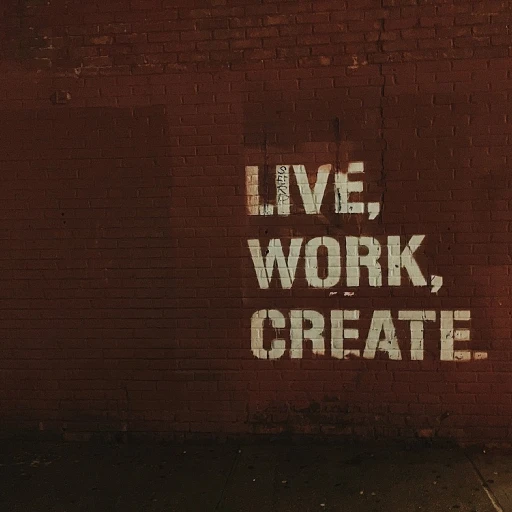
Understanding the Importance of Employee Recognition
Why Employee Recognition Matters
In today's competitive work environment, fostering a positive work culture is critical. A strategic employee recognition approach can transform your organization by creating an atmosphere where employees feel appreciated and valued. Recognition programs are pivotal in aligning a company's core values with the efforts of its workforce. When employees are rewarded for their achievements, it boosts morale and reinforces the company's values and mission.
Driving Engagement Through Appreciation
Employee recognition isn't just about giving rewards; it's about appreciating the hard work and contributions of each team member. A well-crafted recognition program can significantly enhance employee engagement and motivation. Recognizing employees for their contributions not only makes them feel valued but also encourages peer recognition, which strengthens team bonds and enhances the organization's overall success.
A robust program is instrumental in ensuring employees feel appreciated, leading to increased productivity and job satisfaction. By integrating these strategies, companies can create a thriving culture of appreciation that supports both individual growth and organizational success. For more insights on crafting effective employee engagement phrases and templates, visit our detailed post on engagement phrases.
Key Components of a Successful Recognition Program
Essential Elements to Elevate Employee Appreciation
An effective recognition program within a company is strategically constructed to benefit both employees and the organization. Employee appreciation is not just about reward distribution; it includes creating a comprehensive recognition strategy that aligns with the company's values and enhances employee engagement.
To ensure a successful recognition program, several key components need to be considered:
- Clear Objectives: Establish clear goals for the recognition program that align with the organization’s core values and business objectives. This provides a sense of purpose and direction, making it easier for employees to understand the program's intent.
- Criteria for Recognition: Develop specific criteria for recognizing employees, whether for achievements related to individual contributions, team success, or adherence to company values. Clear criteria help employees understand what behaviors and accomplishments are being valued by the organization, reinforcing desired work behaviors.
- Variety of Rewards: Incorporate diverse rewards to cater to different employee preferences—monetary bonuses, extra days off, or public acknowledgment can be effective. This diversity ensures that all employees feel valued and appreciated in ways that resonate with them personally.
- Peer-to-Peer Recognition: Encourage peer recognition within the work environment. Peer recognition not only fosters a positive work culture but also strengthens team bonds, as employees actively appreciate each other’s hard work and contributions.
Integrating these components into a recognition template can facilitate consistent implementation across various departments within the organization. These elements collectively contribute to establishing a positive work environment where employees feel valued and appreciated, ultimately driving overall success and organizational engagement.
For those interested in further enhancing such recognition programs, integrating specific feedback mechanisms can provide more robust data on efficacy. Discover how strategic feedback integration can elevate program success in our detailed analysis on enhancing employee feedback with HRIS.
Integrating Recognition Programs into HRIS
Seamlessly Merging Recognition into Your HRIS
Integrating employee recognition programs into a Human Resources Information System (HRIS) can be a game-changer for companies looking to enhance their corporate culture and employee engagement. A well-implemented system not only simplifies the recognition process but also ensures every employee in the organization feels appreciated for their contributions. An effective integration starts with choosing an HRIS that supports recognition programs. This allows the organization to create a seamless process where recognition is interwoven into the everyday flow of work. For instance, an HRIS can automate recognition notifications, making it easy for managers and peers to participate in employee recognition, thus fostering a positive work environment. #### Benefits of HRIS Integration- Centralized Platform for Recognition: By centralizing the recognition process within the HRIS, employees and managers can easily acknowledge each other's hard work through peer recognition and rewards. This adds to the appreciation culture and improves employee engagement.
- Data Tracking and Analysis: An integrated HRIS system provides data-driven insights into the success of your recognition strategy, enabling companies to evaluate the effectiveness of their programs. This ensures that your organization can continuously refine recognition templates, aligning them with corporate values and goals.
- Automated and Personalized Recognition: With an HRIS, companies can automate the scheduling of recognition events, such as anniversaries or milestones, making sure every team member feels valued and recognized in a timely manner.
- Aligns with Company Values: By linking recognition to company values and objectives, the HRIS can ensure that recognition programs not only celebrate individual achievements but also reinforce core organizational values, thus embedding them deeper into the company culture.
Creating a Customizable Recognition Program Template
Designing a Flexible Framework
Creating a customizable recognition program template is essential for fostering a positive work environment. The template should be adaptable to align with the unique culture and values of your organization. Start by identifying the core values that drive your company culture and ensure these are reflected in your recognition strategy. This alignment helps employees feel valued and appreciated for their contributions.
Essential Elements of the Template
To craft an effective recognition template, consider including the following components:
- Clear Objectives: Define what success looks like for your recognition program. This clarity will guide your team in implementing and maintaining the program.
- Criteria for Recognition: Establish clear criteria for what constitutes recognition-worthy behavior. This ensures consistency and fairness across the organization.
- Methods of Recognition: Include various methods such as peer recognition, manager-led appreciation, and formal rewards. This variety caters to different employee preferences and reinforces a culture of appreciation.
- Feedback Mechanism: Incorporate a feedback loop to continuously improve the program. This could involve regular surveys or feedback sessions to gauge employee engagement and satisfaction.
Customization for Different Teams
Each team within your organization might have different dynamics and needs. A customizable template allows for adjustments that cater to these unique aspects. For instance, a sales team might thrive on competitive rewards, while a development team might prefer peer recognition and team-based rewards. Tailoring the recognition program to these nuances enhances employee engagement and ensures that employees feel appreciated in ways that resonate with them.
Implementation and Continuous Improvement
Once your recognition template is crafted, it's crucial to integrate it seamlessly into the company’s existing programs policy. Regularly review and update the template to reflect any changes in company values or employee feedback. By doing so, the recognition program remains relevant and continues to foster a culture of appreciation and engagement.
Challenges in Implementing Recognition Programs
Overcoming the Hurdles in Employee Recognition Implementation
Creating an effective recognition program doesn't come without its challenges. Companies often encounter several hurdles in ensuring that their employees feel appreciated and valued. Let’s delve into some obstacles organizations may face when integrating recognition programs and how to navigate them effectively.- Inconsistent Implementation: One of the primary challenges is maintaining consistency across different departments and teams. It’s crucial to align the recognition strategy with company values and integrate it seamlessly into the existing company culture. This requires a comprehensive programs policy that guides managers and team leads in delivering recognition timely and uniformly.
- Lack of Employee Engagement: It's not just about recognizing employees; engagement is key. Without active participation from employees, even the best recognition program could fall flat. Encouraging peer recognition and fostering a culture appreciation where employees support each other can enhance employee engagement significantly. Employees should not only feel appreciated by management, but also by their peers.
- Resource Constraints: Some companies may struggle with resource allocation for their recognition programs. Budget limitations might hinder the ability to provide tangible rewards. However, it’s essential to remember that employee appreciation doesn’t always have to be costly. Recognition templates can include various forms of acknowledgment, from simple thank-you notes to formal awards ceremonies.
- Resistance to Change: Introducing a new recognition template or policy may meet resistance within the organization. Employees and managers accustomed to the current work environment might be reluctant to adapt. It’s important to communicate the benefits and align the program with core values to foster acceptance.
- Measuring Success: Finally, organizations often find it challenging to measure the success of their recognition programs. As discussed previously, success metrics such as employee engagement rates, retention statistics, and feedback surveys can provide valuable insights into whether employees feel valued and whether the recognition program is meeting its goals.
Measuring the Success of Your Recognition Program
Assessing and Analyzing Recognition Program Success
Monitoring the impact of your employee recognition program is crucial to ensure its success and alignment with your company values. By measuring the program's effectiveness, you can make informed decisions to refine your recognition strategy, fostering a positive work environment where employees feel valued and appreciated. To evaluate your program effectively, consider the following approaches:- Employee Engagement Surveys: Implement regular surveys to gather feedback from your team about the recognition program. These insights can highlight areas for improvement and gauge how appreciated employees feel in their roles.
- Participation Rates: Track participation rates in the recognition program. This metric can reveal employee engagement levels and help identify whether the program aligns with company culture appreciation and core values.
- Peer Recognition Analysis: Evaluate how frequently employees engage in peer recognition. This aspect of the program boosts a sense of team culture and appreciation, directly influencing the work environment.
- Retention and Turnover Rates: A successful recognition program can improve employee retention. Compare turnover rates before and after the program's implementation as a measure of its impact on employee satisfaction.
- Qualitative Feedback: Encourage open dialogue where employees can share their experiences regarding recognition. This qualitative data is invaluable in shaping a well-rounded understanding of the program's effectiveness.












